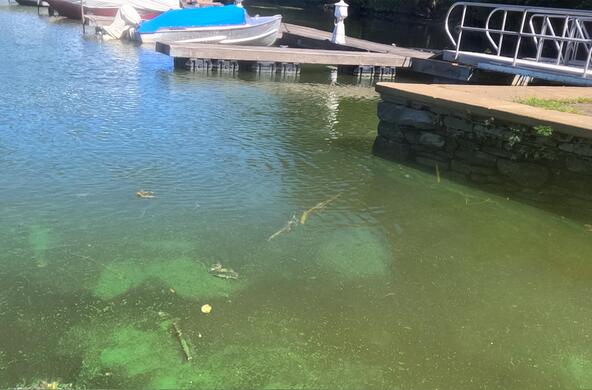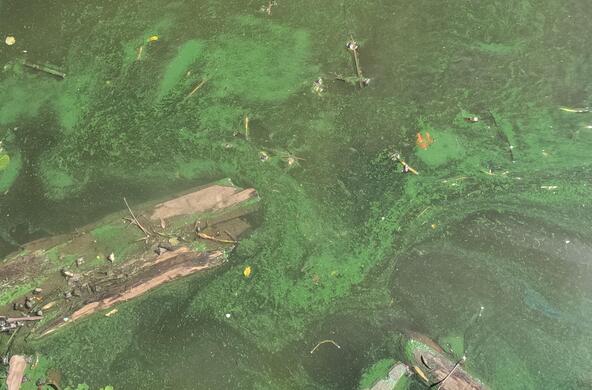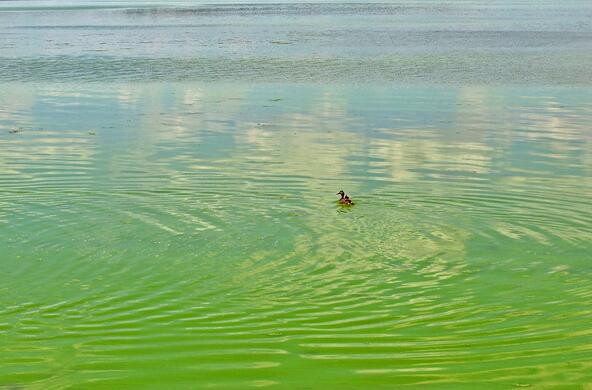Unraveling why clean lakes go green.
Cyanobacteria blooms in lakes are often associated with nutrient-rich runoff from human activities – like agriculture, lawn maintenance, and industry. Managing pollution inputs is often the prescription for fewer blooms.
But what drives algal blooms in clear water lakes in pristine settings? In northeastern North America, there has been a rise in cyanobacteria blooms in low-nutrient lakes.
The problem
- Gloeotrichia echinulata, or ‘Gloeo’, is causing cyanobacteria blooms in northeastern lakes, even in the absence of agriculture or development.
- Warmer water temperatures brought on by climate change intensify cyanobacteria proliferation.
We are exploring...
- How warming lake waters and shifts in seasonal lake mixing influence Gloeo blooms
- The role of lake conditions, such as the sediments that comprise lakebeds, in spurring blooms
Our discoveries
Cary is part of a collaboration among mathematicians and ecologists that is advancing our understanding of Gloeotrichia and its role in causing toxic blooms on clear water lakes in the northeastern US and Canada.
Gloeotrichia lives suspended in lakes during the summer, sinks to the lakebed in a state of dormancy over the winter, then rises back up into the water column when the water warms in the spring.
Gloeotrichia rely on lakebed sediments for nutrients. Identifying factors that influence this nutrient subsidy could help us understand processes that sustain and promote algal blooms on clear water lakes.
With collaborators, Kathleen Weathers studied Gloeotrichia abundance on Lake Sunapee, New Hampshire. Their findings suggest that lakebed substrates and the size of the seedbank strongly influence Gloeotrichia success
Climate change is making northeastern summers hotter and longer. Because of this, algae have more time to thrive on lake surfaces. Gloeo blooms are fed by phosphorus that is stored in lakebed sediments, which becomes suspended and rises to the surface with seasonal lake mixing.
Kathleen Weathers




